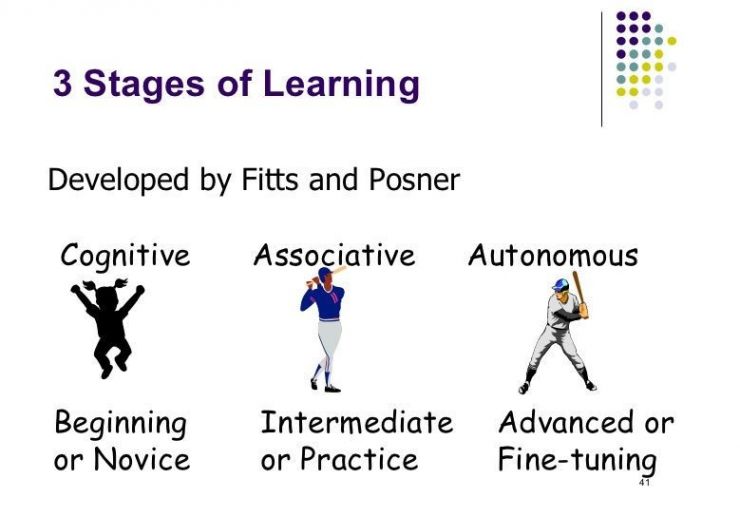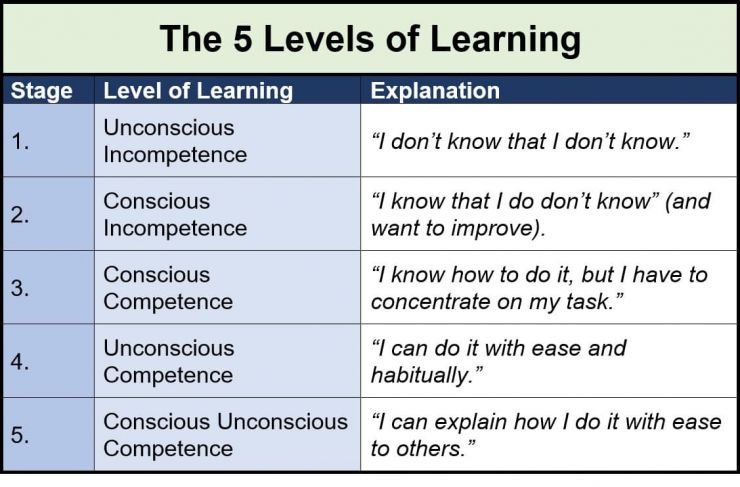Understand Key Development Principles
1. How to learn : Passive Development
Passive learning is a really slow (and sometimes totally stationary) way to learn.
Think of hand writing. Most people have really messy handwriting despite doing it for years. Hand writing often doesn't become neater because there is no conscious thought and effort it make it neater. Generally speaking, if you just write, and what you write is good enough to read, then you will almost certainly believe that your hand writing is as good as your it needs to be, and so it never gets neater.
Apply this model to your football technique or your ability to play the game. Is your development passive in the same way you develop your handwriting ability?
2. Accelerate Development
To accelerate development requires a different approach.
Deep Practice
The is a thing called Deep practice. This is covered in detail in the main resource, but in short development occurs when there is a conscious application of a process where targets can be set and success and failure can be measured. When success is achieved, a new target gets set which again starts out of reach (and failure is likely). Success is achieved when the target is reached. And the process repeats until you get to a level where improvement is hard, but maintenance is essential.
To got to a page that offers a few different videos on the topic of 'learning' better click here.
3. How do you know what to develop :
Start with technical fundamentals:
- Touch
- Footwork patterns (ball mastery)
- Passing technique and accuracy
- Body shape when receiving the ball.
[This is looked at in more detail later in this resource]
Also start to develop some basic physical attributes :
- Fundamental agility patterns
- The ability to hop and jump
- the ability to turn and change direction.
[This is looked at in more detail later in this resource]
As the fundamentals are established, then maybe identify weak areas and make these the focus of development for a while. For example :
- Dealing with an elevated ball.
- Weak foot development
- Heading
And once you feel you have reached a development plateau, find another thing to work on or set harder targets.
4. And remember this :
5 min a day is infinitely better than nothing.
5 minutes a day of deep practice a day (which is easy to do), becomes 30 minutes a week (approx), which is 25 hours a year (approx), which is 250 hours over 10 years of elite level learning and development time. 250 hours of concentrated, focused and elite level practice would be absolutely huge in terms of accelerating development.
And players who start this process young (and do more than 5 minutes a day) have a huge advantage over players who start late and do the bare minimum. But it is never too late to start the process, and development will occur regardless of age, if the type of practice done is efficient and effective.
Many coaches say the golden age of development is from 9-12, when the base gets laid down and good habits become instinctive. But the most improvement occurs between 16 and 20 years old. So if you miss out in the 9-12 window, there is still lots of opportunity to improve in the key development windows that follow.
Categorize Components of your game into one of the following categories :
All components parts of what makes you a player (both now and in the future) should be identified,and put into one of the following groups. After that you then priorities them, and start to work on them. Focusing more effort on the components that have a high priority and leaving low priority components for another developmental cycle.
1. High Priority Immediate Development phase
Components in the immediate development phase should be cycled heavily through the development wheel. Obviously when young the ability to interact with the ball in game functional ways should be a priority, along with fundamental ways to move the body.
2. Low Priority Development phase
Components in the low priority development phase should be cycled lightly through the development wheel. These components need to be looked at, but perhaps not immediately. Like heading for example. All players need to comfortable heading a ball, but you wouldn't learn to head the ball, before be comfortable with control and passing.
3. Maintenance Phase
Components in the maintenance phase should be components that become difficult improve, and the returns from more practice would be minimal, and so valuable development time should be spent else where, where the returns of practice are higher.
For example; You have been working on basic juggling and you have got to 100 juggles (which is great). You could keep working on this and keep going until you get 200, or 2000, or 10,000 juggles..... but perhaps getting to 100 is enough and perhaps you would be better off finding a component that is not at a good enough level, and working on this instead. In this scenario basic juggling would become a low priority maintenance component, and only be done as a warm up for something else. It would not take up much time in your development wheel.
4. Restore Phases :
There will be days where your / balance drops below the level you'd expect, especially when growing, and so these components need a restoration session.
For example : Say you normally have good foot work, but you have a day when your touch is off, maybe you grew a little over night and you now don't have the same body you had the day before, then you will need to spend time in the 'restore phase' to retrain the body and get a back component back up to your normal level.
5. Polish Phase :
This should only be a phase elite players are in. At elite level every 'mm' in terms of precision of touch matters, or every fraction of a second matters in terms of speed of movement. Improvement gains will be small in relation to the amount of time and effort put in, but critical in regards to the level being played at.
Stages of learning
Search 'stage of learning' on google and few models will pop up. Below are couple of info pic's that will always pop up.


The problems with these models in relation to football development might be as follows :
- Unfortunately many young players develop bad habits at a young age which never get fixed. What this means is that these bad habits become 'Autonomous'. Players with 'autonomous bad habits' never actually get out of the 'Unconscious Incompetence' phase even though they may have been playing for years. They think what they are doing is right, and after a while it becomes impossible for them to do it any other way, other than the way they do it. In fact they may believe the 'right way' is in fact wrong, as it feels weird for them to do it the right way.
-
The other problem is that the 'Autonomous phase of the Unconscious competence phase' covers a huge developmental period.
At elite levels the ability to apply components of the game at speed, under huge time and space pressures,
whilst also dealing with a huge array of complex problems to solve over and over again, is critically important.
- Under this pressure (at higher and higher levels) players who have not developed enough in the final stage of learning [Unconscious competence phase], will fall back into a previous stage of learning. They can fall back into the 'conscious incompetence' phase ; That is, they know what they what they need to do, but just can't do it at the level (speed or accuracy etc) required. So it is possible that football players are in a number of developmental stages at the same time, it just depends on what level they are asked to perform.
One of the most powerful tools available to maximize the acceleration of development is understanding the
Science of Deep Practice
Check out this link to find out what Deep Practice is all about.
If you don't understand deep practice then it is very difficult to accelerate development.
Note : This page is page 2.1 [ First link in the table]
|
To find out more, use these lnks. |
||
|---|---|---|
| Page | 2.1 | |
| Page | 2.2 | |
| Page | 2.3 | |
The Talent Code
FAILING LESS LEADS TO SUCCESS
When practicing : Set targets : use these as indicators of failure, of failing less and of success.
Never practice blind : That is : Never practice without a indicator of success or failure
|
Use this table to access the main pages : |
||
|---|---|---|
| Page | 1 | |
| Page | 2 | |
| Page | 3 | |
| Page | 4 | |
| Page | 5 | |
| Page | 6 | |